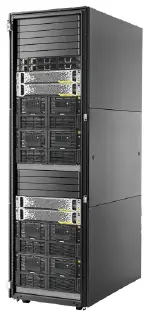 This week at HP Discover, HP announced a new Federated Catalyst feature for the StoreOnce family of disk to disk backup arrays. The new capability will allow backup administrators to make large Catalyst stores on a StoreOnce and allow for data to be striped across all the back-end service sets in the array. Federated Catalyst is available immediately on the StoreOnce B6500 line and will be coming in a few weeks to the StoreOnce B6200 line.
This week at HP Discover, HP announced a new Federated Catalyst feature for the StoreOnce family of disk to disk backup arrays. The new capability will allow backup administrators to make large Catalyst stores on a StoreOnce and allow for data to be striped across all the back-end service sets in the array. Federated Catalyst is available immediately on the StoreOnce B6500 line and will be coming in a few weeks to the StoreOnce B6200 line.
Federated Catalyst overcomes a previous limitation in the StoreOnce family that tied a Catalyst store to a single service set within a StoreOnce device. The same limitation exists for a CIFS store or a virtual tape library store in a StoreOnce array. This is another advantage for HP’s Catalyst technology since it assists administrators who are managing many Catalyst stores.
Previously, within a StoreOnce with 2 couplets and 4 service sets, a minimum of 4 Catalyst stores would be required to use all the available resources in the device. This added additional management points and coordination for the backup administrator within the backup software. By striping the data across all the available service sets, a single large Catalyst store is possible to utilize all the available data.
There are other considerations such as deduplication ratios for stores and the number of backup streams that go into architecting the best possible backup environment but breaking Catalyst stores away from service set boundaries will let IT shops make better decisions about how to lay out stores within StoreOnce for backup. This also provides more scalability for medium sizes shops that may want to purchase a StoreOnce with a smaller initial sizing and grow it over time.
Compared to VTL technology, Catalyst offers a simplified approach to managing backup data. With VTL’s, a library is built and it is populated with emulated tape cartridges. Like physical cartridges, each one has a bar code and media label and other properties that dictate when the data on the cartridge expires and may be re-used. Within a VTL, however, if there are more cartridges than needed, the un-used cartridges will be used before any cartridges are recycled and reused based on backup policies. This leads to inefficiency and extra storage utilization within VTL libraries.
On the flip side, if the VTL has too few cartridges, then the library runs out of space and backups stop. This leads to a big management point for administrators to size and ensure the correct number of cartridges. Catalyst also improves the VTL situation by improving performance. VTL emulates physical tape and so backup software talks with it and expects a certain amount of time before a tape is loaded or unloaded and this adds time to backups. With Catalyst aware software, the D2D backup device is seen for what it really with all of its native capabilities instead of being seen as tape.
Disclaimer: HP invited me to HP Discover as a blogger and covered my expenses to attend the event. I also spoke at a session during the event. As always, the views and opinions stated on this blog are my own. HP was given no editorial control over content or topics for my posts.
